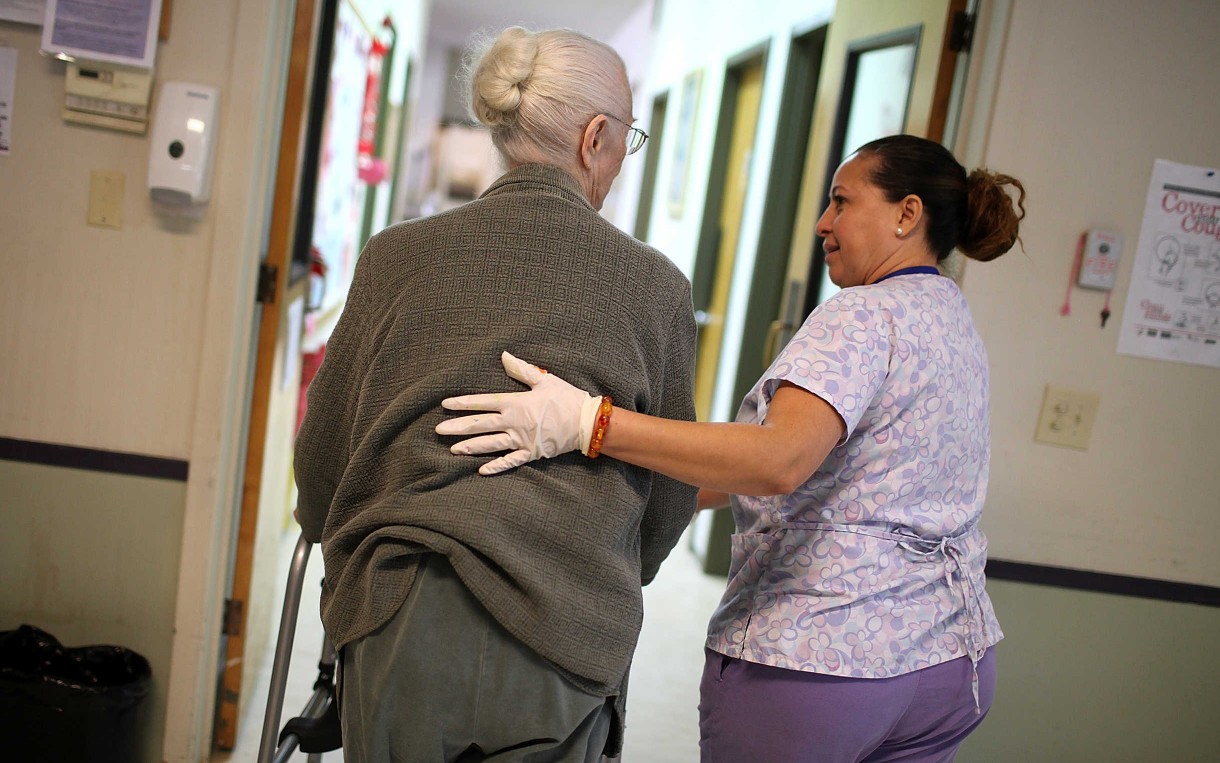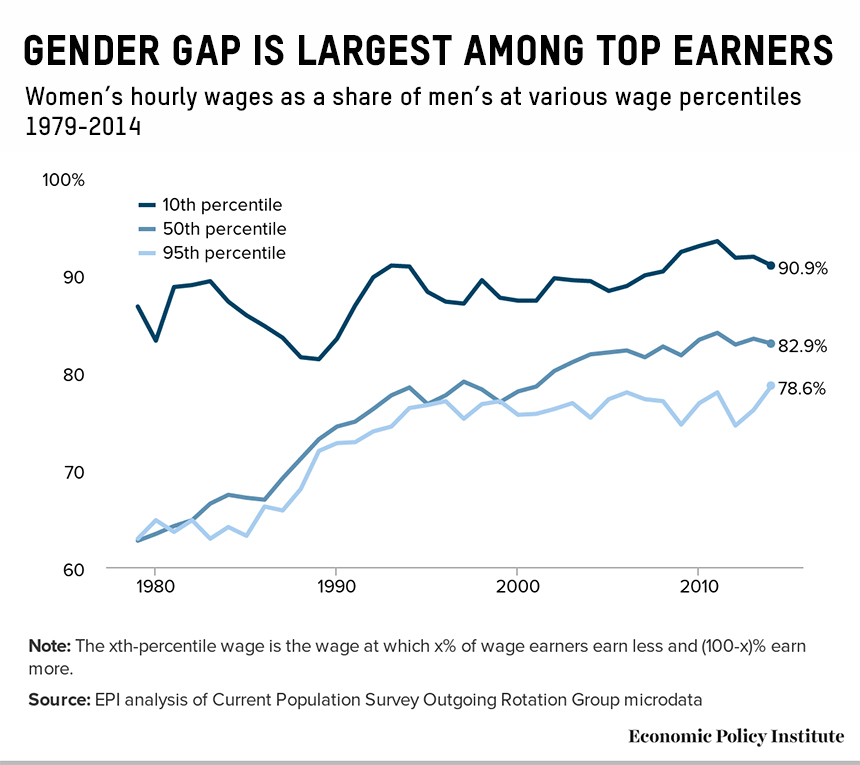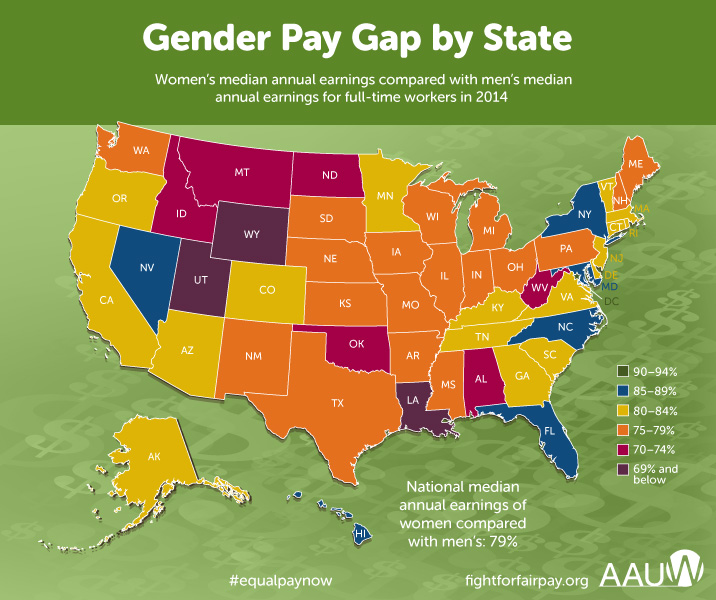Another day, another 79 cents
 Mayra Dittman (R) helps Juanita Gilbert walk to the restroom at an Adult Day Health Care Center in Novato, California. The mean hourly wage of personal care aides is slightly over $10; the occupation is nearly 90 percent female. Photo: Justin Sullivan/Getty Images
Mayra Dittman (R) helps Juanita Gilbert walk to the restroom at an Adult Day Health Care Center in Novato, California. The mean hourly wage of personal care aides is slightly over $10; the occupation is nearly 90 percent female. Photo: Justin Sullivan/Getty Images
On Equal Pay Day (April 12th), consider the gender wage gap. When my mom is angry, she says she’d like to spit nickels. Given women’s wages, however, she can’t afford to…
Here comes Equal Pay Day. Again. It hits at the point in the year when gentlemen can start working, and earn the equivalent of what ladies earn for the entire year.
And here come the stats, and the recommendations. Again.
And then a year goes by, and… The numbers, and the recommendations, come again. The reality sticks: women keep on earning less, across all the boards—age, race, occupation, education.
This is exhausting. The gap may inch up and down, but it’s stuck hovering around 79 percent. It varies across occupations and populations. But it never closes, for any of us. And not to be flippant: it takes a terrible toll on women and our families.
For the record, it hits some women harder than others. A few charts:
Women of color don’t get 79 cents. They get less.
Some get way less; Latinas make close to half of what white men make.
Education doesn’t help.
Well educated women see an even greater gap in their earnings.
And the higher the pay, the greater the gap.
It varies by region.
Some states have yawning gaps; in Louisiana, it’s 65 cents on the dollar.
And it doesn’t matter what the job is.
There’s even new evidence that when women enter jobs traditionally held by men, the wages drop for that occupation.
Right? Essentially, women are paid less no matter what or where or who.
And that’s, for myriad reasons, unjust — and kooky. It’s not that women don’t work as hard (ask any woman harvesting onions or cutting chicken breasts); or get as much education (college graduation rates are higher for women); or do important jobs (ask a female physician, attorney, teacher). It’s not even, really, that we take time off (to bear and raise the new people) or work part-time (see previous parenthetical). It cuts across all that.
More than a stat, it’s a lifelong sentence
And this isn’t just a pretty statistic. In fact, it has profound and lifelong impacts on us, and our daughters. On a simple level, it means women have 21 percent less to spend on everything: homes, cars, healthcare options, utilities.
Which is annoying as hell, and means our lives are constricted – some by a lot, some by a little, but all of us, by that gap.
But it’s way more significant than purchasing power. It is a lifetime of inequity. The National Women’s Law Center (NWLC) notes that the current gap translates to a loss of $430,480 for the average woman over a 40-year career. For women of color, it may be more than a million dollars in “lost” wages.
And that means we have less to invest: in pension funds, and down payments, and advanced degrees (for ourselves or our children). The lower our wealth, the fewer the opportunities; this sets up a cycle which affects our futures, and our families’ futures.
- Women have less wealth: the average woman has 36 cents for every dollar owned by a typical man. Never-married women have 6 percent (!) of the wealth owned by never-married men.
- Women of color have even less: White women have median wealth around $45,000; African American women have median wealth of $100. (That’s not a typo.)
- When women retire, they struggle: the income gap translates into lower retirement income, from Social Security and pensions, which are determined by wage history. Older women receive about $4,000 less each year than older men.
Which is all to say: the pay gap is inflicting lifelong damage on women and girls. It stunts opportunity, darkens futures, and impoverishes families.
So now, to the recommendations.
- Since women do more than their fair share of low-wage jobs, we need to raise the federal minimum wage and eliminate the sub-minimum wage for tipped workers.
- We need federal legislation guaranteeing paid parental leave and earned sick leave, benefits often denied to women who need them most (provided in just about every rich country on earth).
- Women need tools to find out whether they’re being paid fairly, and to seek justice. Check out the Paycheck Fairness Act and the Workplace Advancement Act.
- We need policies to get women trained in solid job skills.
- We need to tackle erratic schedules imposed on many workers. Check out the Schedules that Work Act.
- To help women avoid the strain of cobbling together several part-time jobs, we need measures like San Jose’s “Opportunity to Work Ordinance.”
- Finally, we need affordable, high quality childcare (which often costs more than college tuition). That’s all. You know it matters, for women, children, and men.
Today, I’m surrounded by hard-working and delightful women: an aging mother and two teenage daughters. My mom taught school, my daughters work in movie theaters and kitchens and child care.
We won’t so much celebrate the day, as nod at it, and double down on efforts to maybe, one day, eliminate it.
It’s painful to know that whatever my daughters do – attorney or artist – they will earn less than the boys in their class. No matter how smart and diligent they may be.
If I had extra nickels, I’d spit them…



